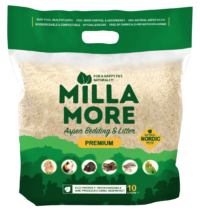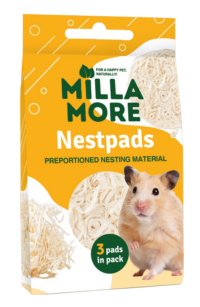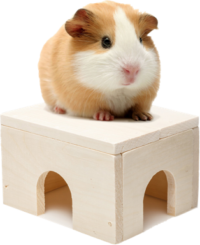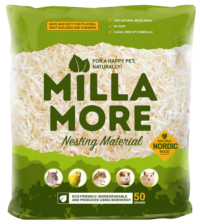First Time Owner Guide With Essential Checklist Of Guinea Pigs
First Time Owner Guide With Essential Checklist Of Guinea Pigs
Guinea pigs are one of the most popular pets. They are low maintenance, friendly, and come in various colors that will surely melt your heart. In the past few years, Guinea pigs have been a popular pet choice. They are very social and can be easily trained to make them more comfortable in the home environment.
If you are getting the guinea pig first, you need to know some basics first. This guide will cover all aspects of owning a Guinea pig, including what you need to do when they’re young, what you should get before owning a guinea pig, and how to take care of them.
Essential checklist of Guinea pigs
A happy and healthy guinea pig is the result of the care taken in advance. Here are the essential items you’ll need before getting a guinea pig.
- Guinea Pig Cages (in which your guinea pig can move freely)
- Water Bottle (for hydration purposes)
- Bedding (Millamore soft bedding is 100% natural from Aspen and dust free)
- Guinea Pig Food (Millamore feed is nutrient-rich and full of supplements feed)
- Hay (unlimited supply of timothy hay)
- Nesting material (Millamore nesting material is made of natural wood aspen that is dust-free and perfect for resting)
- Dishes/Bowls (in which your fluffy can eat and drink quickly)
- Toys (Millamore toys that provide a great opportunity to your friend to play and work out)
- Carrier (in which your guinea can move freely from one place to another)
It is important to get all the essential things for a guinea pig’s health and happiness. A happy, healthy pet equals lots of love.
Handling of guinea pigs
Guinea pigs are small and sensitive animals, which means you need to learn how to handle them. Guinea pigs are social creatures that like to spend time with their friends. Once you tame a guinea pig, they can be as friendly and interactive as any other pet.
However, there are some tips that you should learn to handle your guinea pig:
- The guinea pig is a curious animal, so you have to be careful when handling them. If they are moving around, don’t grab them. Always handle a guinea when he is still. This will not cause them any injury.
- Move your guinea pig to the corner, so they have no space to move, and then grab them.
- Hold the cage by one handle and slowly slide your hand underneath its belly with gentle flicks.
- Use the other hand to make a cup-shaped structure to provide support to all four legs.
- When you pick them up, bring them close to your body, so they feel safe.
Maintenance of cage
If you want to keep your guinea pig germ-free, it’s important to learn to clean it. Use gloves to clean the cage. Here are some steps you need to learn
- Take your guinea pig out of the cage and place him in a carrier, then remove the bedding and toys from the cage.
- Dispose of the hay and clean the whole cage with soap water.
- Clean the guinea pig water and food bowl with a little bit of soap.
- Place a newspaper before adding the new bedding on the cage floor.
- Clean the cage every week to keep the environment clean.
Feeding Routines
One of the most important things you can do to keep a good feeding routine is to take care of your guinea pig. Make sure their water bottle always has some fresh drinking water in it, give them plenty of greens at mealtimes, and don’t forget about hay.
You can also feed your guinea pig commercial food that has been fortified with vitamin C. You can also feed them fruit or vegetables for a healthy diet.
Guinea pigs can be tough to feed, but it’s important for their health. Feeding your guinea pig two times in the morning and evening will keep them happy. It’s important to keep your guinea pig hydrated, so fill the water bowl and give them some time in there. The more often they drink from it or play around with their food dish, the less likely they will be dehydrated.
If you like to feed treats to your guinea pigs, then monitor their intake because guinea pigs can become overweight in no time. Foods high in starch like peas, corn, beans, nuts, cookies, and cakes should be avoided and monitored closely because they may cause choking or abdominal distress.
Exercise
Guinea pigs are one of many species that need to exercise. They love running around freely, which is essential for their health and well-being. Guinea pigs are always on the go, up and down, running. When you’re out and about with your guinea pig, always keep your eyes peeled and be ready to intervene if anything goes wrong.
While it’s perfectly safe to let your guinea pig roam free in a room, you should make sure that there aren’t any wires or cables for them to chew on. Your guinea pig will be happier if you give her a clean space to explore. Please make sure there are no house plants on the floor, and remove any foodstuffs and cable from their reach.
If you want your guinea pig to get along with other animals or humans, he must exercise for one hour each day. Try getting him into a larger space like the living room from time to time so that this can happen.
Environment
When you bring home a new guinea pig, make sure that the environment in which they live is somewhere quiet with little to no activity. This gives them room for exploration and development without feeling overstimulated or stressed out from all of life’s hustle-bustling commotion. Direct sunlight is harmful to your guinea pigs as it can cause them to become sunburnt and even more uncomfortable. Additionally, be careful about the cold, damp conditions often found in basements because this may encourage respiratory issues such as pneumonia. Guinea pigs thrive best in a dry environment, so try to maintain that environment for proper growth.
Find a vet in your area
At the beginning of your pet’s life, it is very important to register with a local vet. This way, you can keep track of their medical records and be sure that they are healthy as possible. A vet’s services are also essential in the event of an emergency or for routine checkups. They can advise on what needs to be done, give vaccinations when required, and even administer injections if needed.
Conclusion
When you bring home a Guinea pig, you are now in charge of taking care of this adorable little creature. You’ve got all the supplies and equipment you need to take care of your new guinea pig. Now it’s time to get them settled in. Follow these simple steps above for a happy, healthy pet.




